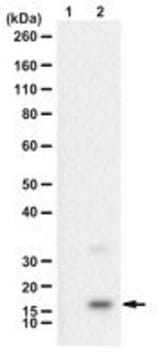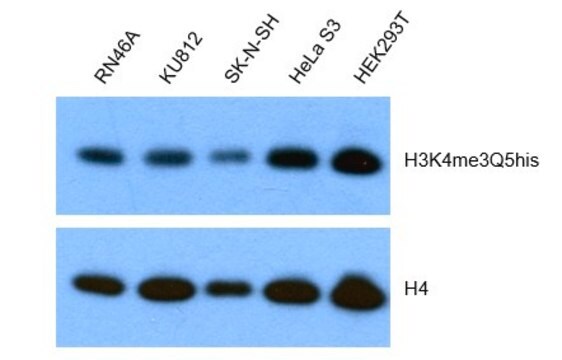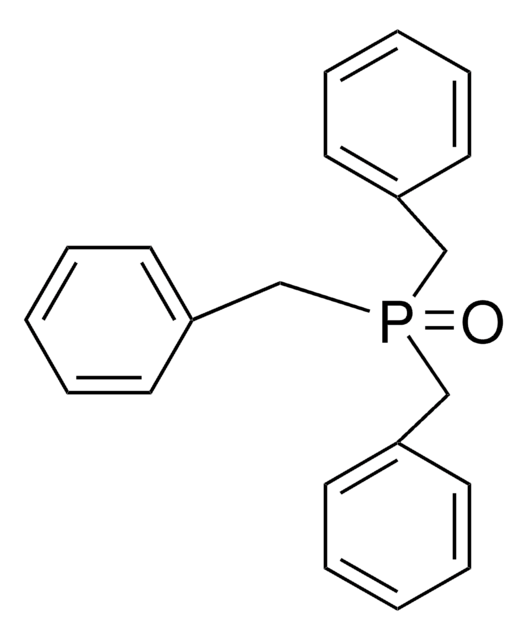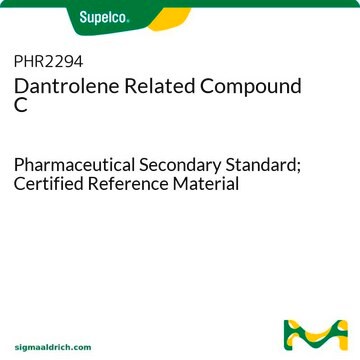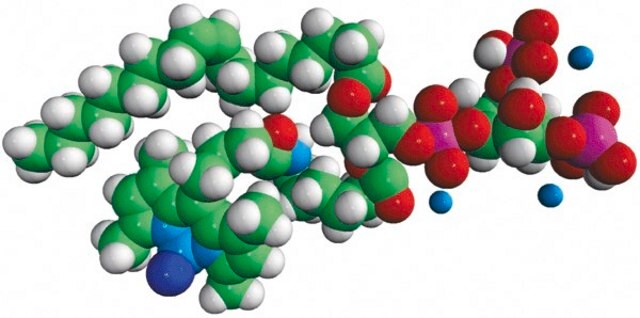ABE2578
Anti-H3Q5histaminyl
Synonym(e):
Histone H3Q5;H3Q5;Histone H3 glutamine5 Histaminyl
About This Item
Empfohlene Produkte
Biologische Quelle
rabbit
Qualitätsniveau
Konjugat
unconjugated
Antikörperform
purified antibody
Antikörper-Produkttyp
primary antibodies
Klon
polyclonal
Mol-Gew.
calculated mol wt 15.51 kDa
observed mol wt ~16 kDa
Speziesreaktivität
human
Speziesreaktivität (Voraussage durch Homologie)
bovine, monkey
Verpackung
antibody small pack of 100 μL
Methode(n)
dot blot: suitable
western blot: suitable
Isotyp
IgG
Epitopsequenz
N-terminal
Protein-ID-Hinterlegungsnummer
UniProt-Hinterlegungsnummer
Versandbedingung
ambient
Posttranslationale Modifikation Target
histaminylation (Gln6)
Angaben zum Gen
human ... HIST3H3(8290)
Allgemeine Beschreibung
Spezifität
Immunogen
Anwendung
Evaluated by DOT Blot analysis with H3Q5Histaminyl peptide
Dot Blot Analysis: A 1:1,000 dilution of this antibody detected H3Q5Histaminyl peptide, but not the unmodified H3Q5 peptide.
Tested Applications
Western Blotting Analysis: A representative lot detected H3Q5histaminyl in lysate from Transglutaminase 2 (TGM2) overexpressing HEK293T cells treated with Histamine, but not in untreated cells or in cells treated with Serotonin or Dopamine. (Data courtesy of Dr. Ian Maze′s Lab, Icahn School of Medicine at Mount Sinai, New York).
Western Blotting Analysis: A 1:1,000 dilution of this antibody detected Histone H3Q5histaminyl in lysates from HEK293T cells over expressing TGM2 and treated with histamine, but not in untreated cells.
Dot Blot Analysis: A 1:1,000 dilution of a representative lot of this antibody detected H3Q5histaminyl peptide, but not serotonin or dopamine modified peptides. (Data courtesy of Dr. Ian Maze s Lab, Icahn School of Medicine at Mount Sinai, New York).
Activity Assay (In vitro): A representative lot of this antibody detected the recombinant Histone H3.3 histaminylated on glutamine 5 following in vitro transamidation reaction in the presence of histamine. (Data courtesy of Dr. Ian Maze Lab, Icahn School of Medicine at Mount Sinai, New York).
Note: Actual optimal working dilutions must be determined by end user as specimens, and experimental conditions may vary with the end user
Physikalische Form
Lagerung und Haltbarkeit
Sonstige Hinweise
Haftungsausschluss
Not finding the right product?
Try our Produkt-Auswahlhilfe.
Lagerklassenschlüssel
12 - Non Combustible Liquids
WGK
WGK 1
Flammpunkt (°F)
Not applicable
Flammpunkt (°C)
Not applicable
Analysenzertifikate (COA)
Suchen Sie nach Analysenzertifikate (COA), indem Sie die Lot-/Chargennummer des Produkts eingeben. Lot- und Chargennummern sind auf dem Produktetikett hinter den Wörtern ‘Lot’ oder ‘Batch’ (Lot oder Charge) zu finden.
Besitzen Sie dieses Produkt bereits?
In der Dokumentenbibliothek finden Sie die Dokumentation zu den Produkten, die Sie kürzlich erworben haben.
Unser Team von Wissenschaftlern verfügt über Erfahrung in allen Forschungsbereichen einschließlich Life Science, Materialwissenschaften, chemischer Synthese, Chromatographie, Analytik und vielen mehr..
Setzen Sie sich mit dem technischen Dienst in Verbindung.